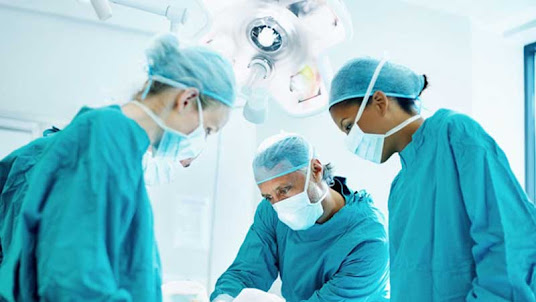What Is Salivary Gland Tumor and Parotid Cancer
★ Tumors of the salivary glands tumor are abnormal cells that develop in the glands themselves or in the ducts that carry the glands' drainage fluid. Tumors of the salivary glands may be cancerous or benign (malignant). Although benign tumours of the salivary glands represent the majority, some are malignant. Additionally, if untreated, benign tumours have the potential to develop into malignant ones over time.
★ Malignant tumours of the salivary glands are quite uncommon, accounting for only 6% of head and neck cancers. A benign, slow-growing tumour in the parotid gland makes up the majority of salivary gland tumours (around 80% of all salivary gland tumours). Small tumours of the salivary glands are uncommon.
★ a typically painless, hard salivary gland swelling (in front of the ears, under the chin, or on the floor of the mouth). Depending on the underlying reason, swelling might develop at different rates. Rapid swelling is more likely to be a sign of an infection or a malignant tumour, while slow swelling typically signals a benign tumour. Facepalsy, or difficulty moving one side of the face, is a condition. This may be an indication of an advanced, malignant tumour, especially in the parotid gland.
★ The primary method of treatment for eliminating malignant tumours is surgery. Partial superficial parotidectomy may be used to partially remove small to medium-sized malignant tumours, although depending on where they are located, most patients need a more involved procedure. If the condition has progressed past the salivary glands, surgery may be combined with chemotherapy or radiation therapy.
★ Major salivary glands include the parotid glands. There are two of them, one directly in front of and one below each ear. Your parotid glands generate saliva (spit), similar to your other major salivary glands (submandibular and sublingual), to keep your mouth moist and to help with eating and digestion.
★ Infections or enlargement of the parotid gland can occur in some people (parotitis). When this occurs, recommended therapies can include parotid gland massage, warm compresses, or antibiotics.Parotid gland tumours can appear in some people. Radiation therapy, chemotherapy, or surgery to remove all or part of the parotid gland are possible treatments.
★ Just below and in front of each ear are parotid glands. The sublingual and submandibular pairs of large salivary glands are two more pairs that you possess (under your jaw).
★ The Stensen's duct, which the parotid gland joins, transports saliva to your mouth and releases it close to your upper molar teeth. Saliva is transported to the bottom of your mouth via a tube known as Wharton's duct, which is connected to your sublingual and submandibular glands (under your tongue).
★ The parotid gland looks like an inverted pyramid. It widens up near the top and narrows down toward your jawline at the bottom. parotid gland's outer layer is protected by lymph nodes. Your jaw and the masseter muscle are pressed up against the inner grooved surface (the muscle that connects your lower jaw to your cheekbone).
★ Your parotid gland condition's underlying cause will determine your course of treatment. For instance, if your parotid gland swells due to a bacterial infection, your doctor will probably recommend antibiotics.
★ Your doctor could advise getting a face massage or sucking on lemon candies to increase salivation if stones are obstructing your parotid gland. If this doesn't work, they might try various salivary flow-inducing drugs. If nonsurgical measures are unsuccessful, your healthcare practitioner can advise having the stones removed surgically.
★ The parotid glands are important for digestion and dental health. Call your doctor right away if you experience parotid gland swelling or infection. A enlarged parotid gland can frequently be effectively treated without surgery. However, surgical intervention can be required in rare circumstances.




Comments
Post a Comment